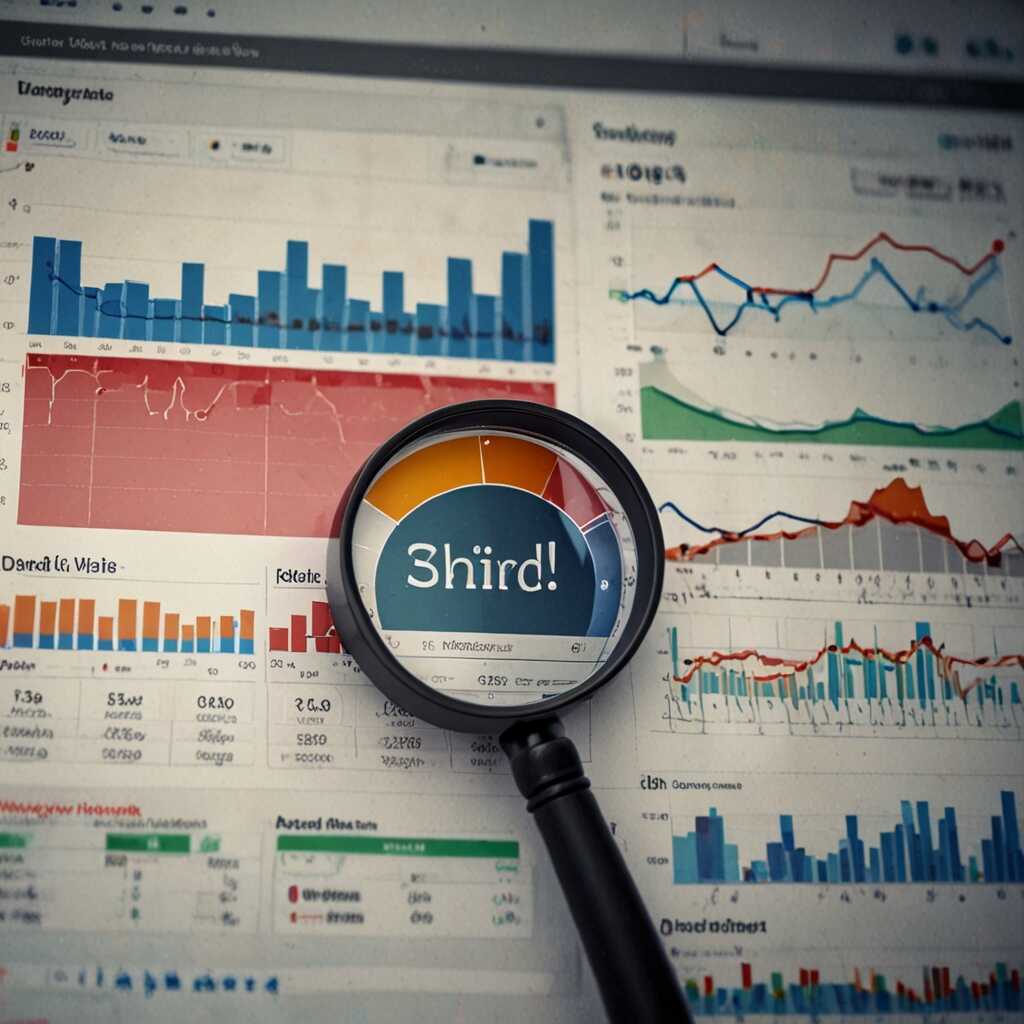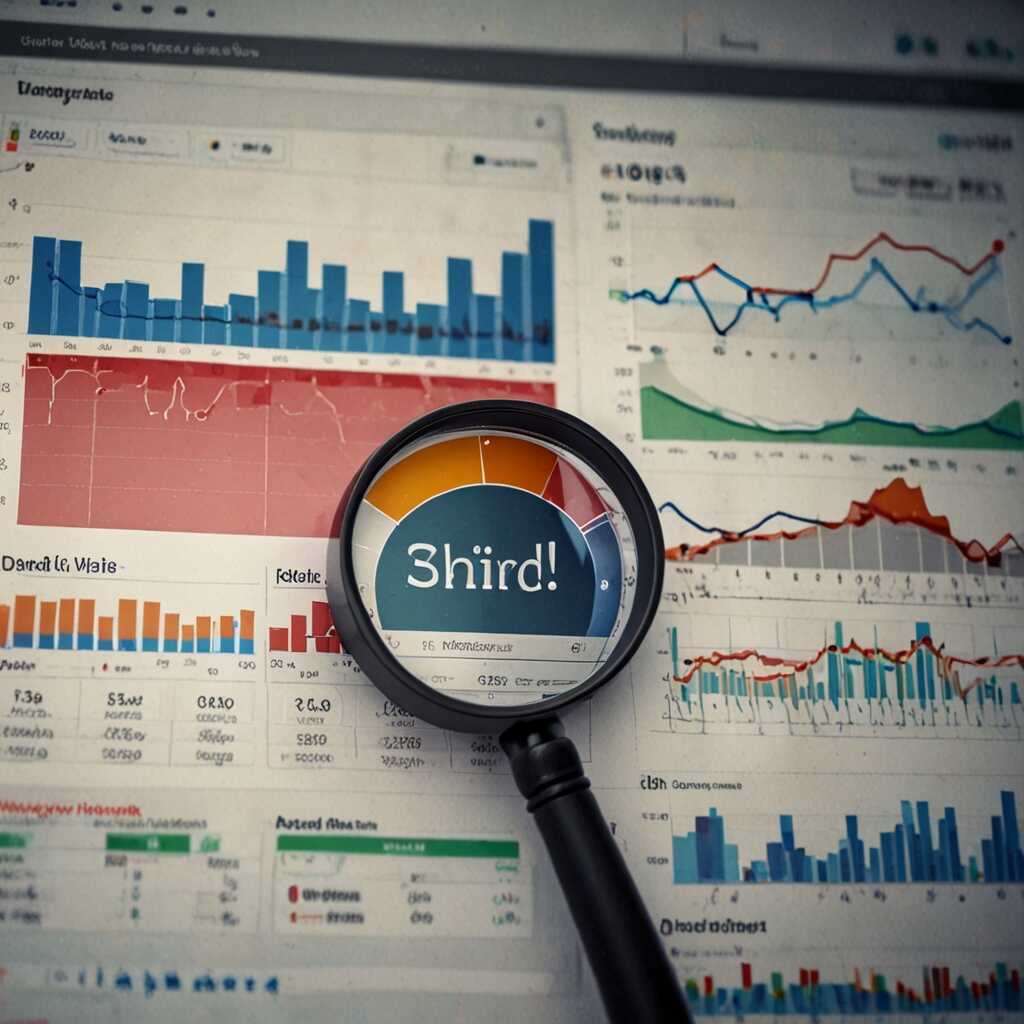Site speed directly influences SEO rankings and user experience, playing a critical role in website visibility. A fast-loading site can lead to higher search engine placements, ultimately boosting user satisfaction and engagement. At Metrics Rule, we understand that improving site speed is essential for both SEO performance and creating a positive user experience. In this article, we’ll explore actionable strategies to enhance your site speed and its significant impact on your website’s success.
Why Site Speed Matters for Your Search Engine Rankings
Site speed is essential for SEO rankings because it directly impacts user experience. An efficient site ensures that visitors quickly access content, resulting in lower bounce rates and higher engagement. Search engines like Google prioritize websites that load quickly, as this enhances user satisfaction. According to recent data, websites that load in under three seconds provide a much better experience than those with higher load times. Factors such as server response time, resource size, and mobile optimization significantly influence site speed. By optimizing these elements, you create a more responsive website that search engines rank higher.
Key Factors Influencing Site Speed and SEO
Several key factors influence site speed and, consequently, your SEO performance. Server response time is critical; using a reliable hosting provider can improve this. Additionally, optimizing images and minifying CSS and JavaScript files can reduce resource size and enhance loading speed. Mobile optimization is especially important as most users now access websites via smartphones. Ensuring your site is mobile-friendly contributes to faster load times and improved rankings on search engines like Google. Collectively, these optimizations not only enhance user experience but also lead to better crawling and indexing by search engines, making them essential for competitive SEO strategies.
The Effects of Slow Loading Times on User Behavior
Slow loading times can drastically affect user engagement metrics such as bounce rate and session duration. Research shows that about 53% of mobile users will leave a site if it takes more than three seconds to load. A higher bounce rate indicates that users are not finding the content reliable or engaging, while shorter session durations suggest that visitors quickly lose interest. By improving site speed, businesses can enhance these metrics, ensuring a more satisfying user experience, which in turn supports better SEO rankings. Additionally, various studies reveal consistent trends across e-commerce platforms where even a one-second delay can lead to a significant decline in conversions.
Understanding Bounce Rate and Its Connection to Page Load Speed
Bounce rate reflects the percentage of visitors who leave a website after viewing only one page. Studies indicate that for every one-second increase in loading time, bounce rates can jump by as much as 32%. By optimizing site speed, online businesses can keep users engaged longer, leading to better session durations and fewer users abandoning the site. Furthermore, a faster site encourages users to explore additional pages, which enhances overall user engagement metrics and results in a stronger online presence. In the competitive landscape of e-commerce, understanding and addressing bounce rates through speed optimization is essential for long-term success.

How Google and Other Search Engines Assess Site Speed
Search engines, like Google, measure site speed using key metrics, such as Core Web Vitals. These metrics assess loading speed, interactivity, and visual stability. Specifically, Google emphasizes three essential Core Web Vitals: Largest Contentful Paint (LCP), which measures loading speed, First Input Delay (FID), which measures interactivity, and Cumulative Layout Shift (CLS), which focuses on visual stability. These metrics collectively provide a comprehensive view of user experience. E-commerce websites should aim for an LCP of under 2.5 seconds, a FID of under 100 milliseconds, and a CLS of less than 0.1 for optimal performance in search engine rankings in 2025.
Understanding Core Web Vitals and Their Importance
Core Web Vitals play a vital role in how search engines rank websites. By focusing on these metrics, site owners can significantly improve user experience and engagement. For example, optimizing for loading speed, which measures how quickly the main content of a page is visible, ensures that users don’t abandon slow-loading pages. Additionally, a lower CLS helps prevent content from jumping around during load time, which enhances user comfort. By continuously testing and optimizing these Core Web Vitals, primarily for mobile performance, businesses can ensure higher rankings in search engine results, including local searches, and provide a seamless browsing experience.
Key Statistics on Page Load Performance
- Google estimates that 53% of mobile site visitors leave if a page takes more than 3 seconds to load.
- Websites that load in 2.5 seconds or less tend to have 70% higher user engagement rates.
- Sites with a 1-second load time can increase conversions by up to 7%.
- Every additional second added to page loading time can decrease customer satisfaction by up to 16%.
- Page speed is a ranking factor for 70% of mobile-first indexing criteria.
- Fast-loading websites can improve return visits by 25% or more.
- Over 80% of online shoppers say they prefer sites that load quickly.

Effective Strategies for Boosting Your Site’s Speed
To enhance your site’s loading speed, you can implement several practical steps. First, compress images using tools like TinyPNG or ImageOptim, which helps reduce file sizes without sacrificing quality. Next, enable browser caching, allowing visitors to store frequently accessed data locally, which speeds up subsequent visits. Additionally, utilize a Content Delivery Network (CDN) to distribute your content across various global servers. This ensures that users load your site from the nearest server, enhancing overall speed. Finally, minimize HTTP requests by reducing the number of scripts and stylesheets, which, according to research, can significantly improve site performance. Continuous testing and monitoring are also essential to gauge the impact of your changes on site speed.
Exploring the Best Performance Testing Tools for Websites
Choosing the right performance testing tools is crucial for effectively measuring your site’s speed and identifying areas for improvement. Popular options include Google PageSpeed Insights, GTmetrix, and Pingdom. Google PageSpeed Insights offers a reliable analysis of your site’s performance, providing actionable insights focused on enhancing user experience. GTmetrix combines Google’s Lighthouse metrics and Web Vitals for a comprehensive review, enabling easy access to specific recommendations tailored to your site’s performance. Pingdom stands out for its user-friendly interface and detailed reports, allowing you to quickly compare your site’s performance against competitors. Remember, effective site speed optimization hinges on using these testing tools regularly to maintain excellent loading times and a satisfying user experience.

Key Metrics That Impact Your Site Speed Rankings
To understand how to improve your site speed rankings, you should focus on several essential metrics. Server response time is crucial; aim for a response under 200 milliseconds. Page size also matters; ideally, keep it under 2 MB to enhance loading speeds. The number of HTTP requests affects performance as well; reducing these requests can significantly lower loading times. Regularly testing these metrics using tools like Google PageSpeed Insights provides valuable insights into your website’s performance and areas for improvement.
Understanding Server Response Time and Its Impact on SEO
Server response time is a critical factor influencing site speed metrics. It measures the time taken for the server to accept a request and start sending data back. A faster server response enhances user experience and improves your website’s ability to rank well in search engines. Aim for a server response time below 200 milliseconds, which is proven to improve both user satisfaction and SEO results. Regular monitoring and optimizing your hosting environment can lead to better server response times, ultimately benefiting your site speed and overall performance.
Advantages of Enhanced Website Load Times
- Improved user satisfaction leads to lower bounce rates on your site.
- Faster page speeds lead to better rankings in search engine results.
- Users are more likely to complete purchases on faster-loading sites.
- Engaging content stays visible longer, capturing more attention and interaction.
- Greater chance of visitors returning to your site after a satisfactory experience.
- Faster load times reduce server load, contributing to lower hosting costs.
- A quicker site enhances mobile responsiveness, improving overall accessibility.

Common Pitfalls That Slow Down Websites and How to Avoid Them
Common mistakes that lead to poor site performance include unoptimized images, excessive scripts, and not leveraging browser caching. Uncompressed images can increase load times significantly, while using too many scripts can slow down the rendering process. To avoid these issues, it is essential to utilize image compression techniques and minify scripts where possible. Additionally, not using features like Content Delivery Networks (CDNs) can reduce a site’s efficiency. Implementing these practices can greatly enhance your website’s speed and overall performance.
Strategies for Optimizing Images and Scripts to Enhance Site Speed
Image optimization and effective script management are crucial for improving site speed. Implementing image compression techniques reduces file sizes without sacrificing quality, thereby enhancing performance. For scripts, use asynchronous loading to ensure they do not block rendering. Keeping JavaScript and CSS files streamlined ensures faster loading and better user experience. Tools like Google PageSpeed Insights provide a detailed analysis of your site’s performance, helping you identify areas for improvement. These strategies are essential for keeping your website efficient, especially in the competitive e-commerce landscape in Vancouver.
Success Stories: Websites That Thrived by Improving Speed
Many websites have significantly improved their performance by prioritizing speed. For instance, an e-commerce site experienced a 30% faster load time, resulting in a 25% increase in user retention and a 15% increase in sales. Another example is a news website that reduced its load time by 50%, leading to a 40% boost in page views and a noticeable decline in bounce rates. The software industry also saw a major player enhance its loading speed by 70%, which directly contributed to an improved user satisfaction rating by over 20%, showing that speed optimization positively impacts every industry.
Industry-Specific Cases of Speed Improvement
Different industries have unique reasons for enhancing their speed. In e-commerce, faster loading times lead to reduced cart abandonment, directly enhancing overall revenue. A case study from a Vancouver-based retail site showed a 60% increase in mobile conversions after improving its speed to under 3 seconds. In the travel industry, a website reduced its load time from 5 seconds to 1.5 seconds, resulting in a 50% increase in bookings. These specific examples demonstrate that speed optimizations are designed to improve user experience, ensuring businesses enjoy better SEO rankings and customer satisfaction.
Comparative Evaluation of Relevant Digital Performance Brands
- Google PageSpeed Insights offers website speed analysis; it’s comprehensive but can be complex for beginners.
- GTmetrix provides detailed load time reports, making it beginner-friendly with visual data.
- Pingdom’s speed testing is simple to use; however, it may lack some advanced analytics.
- WebPageTest.org delivers in-depth testing options but can be intimidating for less technical users.
- SEMrush is great for comprehensive SEO insights alongside speed data but requires a subscription fee.
- Lighthouse, Google’s open-source tool, offers detailed reports but may need setup knowledge to access effectively.
- Comparing user needs: small businesses often favor easy-to-use tools, while larger enterprises may need advanced analytics.
The Evolving Role of Site Speed in Future SEO Strategies
As we look toward 2025, site speed is becoming increasingly vital in SEO strategy. Search engines like Google are expected to continue prioritizing faster-loading sites, affecting ranking algorithms. Advances in site speed technologies, such as HTTP/3 and improved CDN offerings, will significantly enhance the way websites are optimized for a better user experience. Research indicates that improving page load times by even a fraction of a second can lead to higher user engagement rates, which in turn can boost site visibility in search results. User experience, which includes loading speed, is essential for both SEO and profitability in e-commerce settings.
Technologies Impacting Site Speed Optimization
Looking ahead, several emerging technologies will be pivotal for site speed optimization. HTTP/3 is a promising protocol designed to improve web performance. It enhances connection reliability and speeds up data transfer between the server and clients, which could drastically reduce loading times. Additionally, implementing lazy loading and next-gen image formats like WebP can dramatically reduce image loading times, helping to meet future SEO standards. Tools like Google’s Core Web Vitals provide metrics to help webmasters understand essential speed metrics, ensuring your website meets the best practices recommended for 2025. A strong focus on optimizing mobile experiences will also be essential, as more users access the web through mobile devices.
